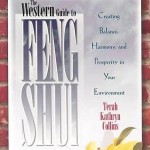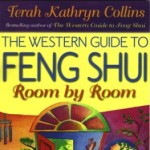The Less Traveled Path to Purpose – Audio Interview
Transform your Life with Radical Self-Acceptance
with host Lora LaFhae of Truth-Seed.com
“Terah Kathryn Collins is a shining star. She is the founder of the Western School of Feng Shui. According to Terah, “Essential Feng Shui is the study of how to arrange your environment to enhance your life. It is not an event; it’s a lifestyle…” Terah is a great example of someone following their true purpose and flourishing in the light of that experience. She exudes a feeling of balance and peace.”
Read More
Essential Feng Shui Tips: Beams
Feng Shui Definitions
Overhead beams are a popular structural feature in Western architecture and are considered to add character. They can also add a sense of heaviness and danger over your head, especially when you sit or sleep directly under them. The bigger, darker, and lower they are, the more you want to lighten them up in some way.
- Paint or refinish beams to match the ceiling color. Or, paint them white or a light pastel color.
- Literally lighten up beams by running strings of tiny white lights along them. Or, place up-lighting directly beneath beams to lift them from below.
- Symbolically break the beam’s heaviness by hanging two objects at angles that suggest a drawbridge partially open (/ \). You can use two bamboo flutes, hung with the mouthpieces down to symbolize the Ch’i flowing up to lift the beam. Or, hang things that imply a lifting and lightening of the beam, such as feathers and ribbons. Appropriate subject matter such as vines and birds can also be painted on beams to artistically lighten their presence.
- Hang beautiful handwoven textiles, prayer flags, floral swags, banners, mobiles, or any other lightweight items from the beam.
- When applicable, soften the hard line of a beam by rounding its sharp edges. Or add curves at each end of the beam to simulate an arch.
- Canopy your bed when there’s a beam over it and you cannot move the bed to another location.
Essential Feng Shui Tips: Bathrooms
Feng Shui Definitions
The primary function of our bathrooms is to clean our bodies-inside and out-via the sink, shower, bathtub, and toilet. In Feng Shui, plumbing is considered a potential threat to the vital Ch’i circulating through the house. Just like water, Ch’i can be pulled down the drain. Although we’re grateful to have bathrooms so conveniently located in our homes, we certainly don’t want to flush our prosperity down the toilet or watch our health go down the drain! We can design our bathrooms so that the Ch’i remains buoyant; and our health, wealth, and happiness flourish.
- Keep the drains of the tub and sink closed when not in use, and make sure you keep the lid on the toilet seat closed. The latter is especially important due to the toilet’s large opening.
- If possible, install the toilet so that you don’t see it from the door. Put it in its own room or behind a wall or screen. When this is not possible, hang a round-faceted cut-glass crystal from the ceiling between the door and the toilet to help lift and circulate the Ch’i (see other Ch’i enhancers).
- Make all bathrooms beautiful! You can quickly lift the Ch’i with a fresh coat of paint, new towels, art objects, and plants.
Essential Feng Shui Tips: Attics and Basements
Feng Shui Definitions
Attics and basements, like all storage areas, need to be organized. Everything kept there should be loved or useful in some way. Give everything a good home that’s easily accessible, uncluttered, and well lit.
Read MoreEssential Feng Shui Tips: Art
Feng Shui Definitions
Art of all kinds, including paintings, sculptures, collages, and textiles, has a powerful effect on people. To enhance the Ch’i in your home, choose art that elicits positive feelings and in some way makes your heart sing. Your goal is to make sure that every piece of art in your home is one that you love.
- Match your art with the function of each room. Choose soothing, romantic, or sensual art for your bedroom; lively, colorful art for the living room; powerful, motivational art for your office.
- Use the Bagua Map to help you find the places in your home that correlate with your goals in life. If you wish for romance and your Love and Marriage area is in the dining room, choose art that’s romantic and appropriate for your dining area. If you wish to improve your health and your Health and Family area is in the bathroom, display art there that evokes radiant health and vitality.
- Honor everyone living with you by making sure they also like the art displayed in shared rooms.
- Your art should portray whole images and serene or inspirational subject matter. Art depicting violence, death, distortion, or negativity is not advised.
- Very special Ch’i resides in art that you and your family create. Sow your personal Ch’i into your home by expressing your creativity. Make sure you aren’t hiding away any art pieces that deserve to be framed and displayed.
Essential Feng Shui Tips: Angles and Corners
Feng Shui Definitions
In Feng Shui, where feelings of safety and comfort are paramount, protruding sharp angles and corners are considered dangerous. They produce “cutting Ch’i (pronounced CHEE),” or arrowlike energy that can make people feel irritable, uncomfortable, and unsafe (see Ch’i). Our angular Western architecture also creates corners in every room where Ch’i tends to collect and deteriorate. In Feng Shui, these extreme features need to be balanced.
- Even if the general shape is square or rectangular, choose architectural designs and furniture with rounded corners and more organic lines to assure safety and comfort.
- When existing furniture has sharp corners, drape fabric or a vining plant over the corners to soften them, or turn furniture at a diagonal to minimize the corner’s effect.
- Balance protruding angles with the softening influence of plants, screens, textiles, and lighting. Or explore the magical possibilities of faux painting and trompe l’oeil (a French term meaning “to fool the eye”).
- Fill in room corners with items that soften and round them out, such as diagonally placed furniture, lamps, curtains, plants, baskets, screens, and art.




